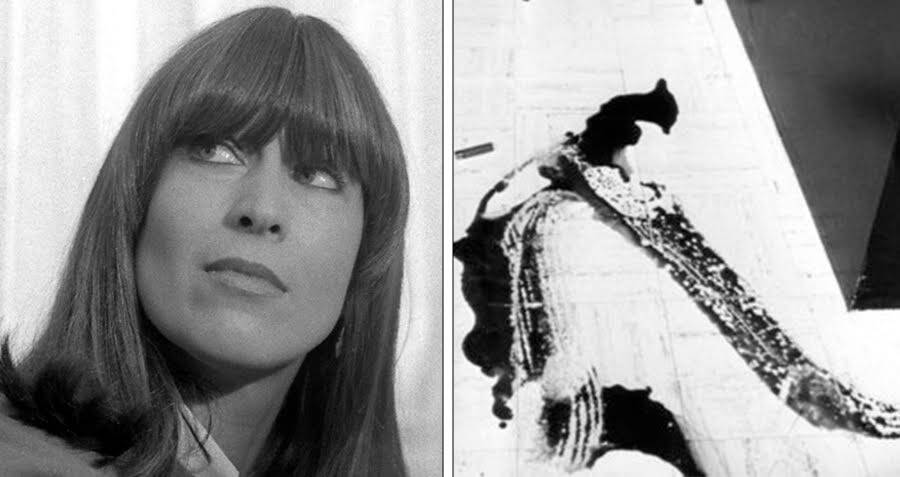Back on March 6, 1981, a court building in what was then called West Germany became the scene of something truly unforgettable. Marianne Bachmeier, a woman whose name would soon become known across the country, did something that day which, you know, caught everyone off guard. She opened fire, right there in a room full of people, a place where folks usually expect things to be orderly and, well, calm. This action, so unexpected in a public setting, quickly grabbed the attention of many, many people, shaping how some folks thought about what is right and what is wrong.
Her actions that morning, they really, really made news, especially in West Germany. Marianne Bachmeier sought a kind of personal payback, you see, against a man who was facing accusations for taking the life of her young daughter. It was a moment that, in some respects, felt like a scene from a story, yet it was very much real. The question of what happened to Marianne Bachmeier, and why she did what she did, has stayed with people, too it's almost, for a long time since that day.
This event, you know, became a talking point, often referred to as "Der Fall" or "The Case" in Germany. It’s a story that brings up lots of thoughts about deep sorrow, about what fairness means, and about the very strong feelings that can bubble up when someone feels wronged. It really, really shows how emotions can clash with the rules of the law, creating a situation that people continue to talk about, even now.
Table of Contents
- Who Was Marianne Bachmeier - A Brief Look
- What Happened on That Fateful Day - Marianne Bachmeier's Courtroom Act
- The Build-Up to Marianne Bachmeier's Moment
- The Scene in the Courtroom - Marianne Bachmeier's Presence
- How Did Marianne Bachmeier Take Justice Into Her Own Hands?
- What Was the Aftermath for Marianne Bachmeier?
Who Was Marianne Bachmeier - A Brief Look
Marianne Bachmeier, as a name, is fixed firmly in Germany’s way of thinking about its laws and its overall cultural story. It’s a name that, in a way, stands for both deep sorrow and what people consider right. It also represents a great upset of feelings and a lot of talk about the law. She became known for a very specific action that day, one that made people think a lot about personal fairness versus the way the legal system works. She was, you know, a woman who found herself in a situation that pushed her to a point of no return, as some might say.
Her story, in fact, is often brought up when people talk about the limits of human endurance and the idea of personal retribution. It’s not something that happens every day, of course, for someone to take such a dramatic step in a public place. This act, therefore, has made her a figure that people still discuss, even after all these years. She is, in a sense, a symbol of a very raw and deeply human response to something truly terrible.
Personal Details and Bio Data of Marianne Bachmeier
While specific personal details about Marianne Bachmeier beyond the events of that day are not provided in the source text, we can gather some basic facts about her public actions and their consequences.
| Name | Marianne Bachmeier |
| Notable Action | Opened fire in a courtroom on March 6, 1981 |
| Reason for Action | Sought personal payback against the man accused of murdering her daughter |
| Location of Event | A courthouse in Lübeck, West Germany (Room 157 of the Lübeck District Court) |
| Outcome of Trial | Convicted of manslaughter and illegal possession of a firearm on March 2, 1983 |
| Historical Reference | Often referenced as "Der Fall" (The Case) |
| Cultural Significance | A symbol of grief, justice, emotional turmoil, and legal debate in Germany |
What Happened on That Fateful Day - Marianne Bachmeier's Courtroom Act
The morning of March 6, 1981, was, in a way, just another day for many. But for Marianne Bachmeier, it was the day she had set for a very specific purpose. It was, you know, the third day of a trial involving a man named Grabowski, and around ten in the morning, things took a turn that nobody present could have truly predicted. She walked into the court building in Lübeck, Germany, with something in mind, something that would change her life and become a significant part of legal memory.
She entered Room 157 of the Lübeck District Court, which, you know, was a place where serious matters of law were discussed. She was wearing a coat that went down far and felt quite weighty, and she carried herself with a certain uprightness, her head held high. This composure, in retrospect, might have seemed a bit out of place given what was about to unfold, but it was, apparently, how she presented herself in that moment. The air in the room, one could imagine, was filled with the usual hushed tones of a court proceeding, before everything changed.
The Build-Up to Marianne Bachmeier's Moment
It was, as a matter of fact, around 10 AM on March 6, 1981, when Marianne Bachmeier made her way into the courtroom. This was, you know, the third day of the trial for the man accused in her daughter's case. She had a specific type of handgun, a Beretta 70 pistol, which she managed to bring into the court building without anyone knowing. The act of bringing a weapon into such a place, you see, speaks volumes about her resolve and the depth of her feelings at that time. It suggests a plan, a determination that had been building up.
The atmosphere in the courtroom, before her actions, was probably like any other day in court. People were there, more or less, to witness the legal process unfold, to hear the arguments, and to see justice, as they understood it, being pursued. But Marianne Bachmeier had, apparently, a different kind of justice in mind. Her presence, her very demeanor, must have been a quiet contrast to the storm that was about to break. It was a moment of calm, you know, before a very sudden and shocking event.
The Scene in the Courtroom - Marianne Bachmeier's Presence
When Marianne Bachmeier stepped into Room 157, the court building was, quite literally, full of people. It was, you know, a very public setting, and her presence, though perhaps unnoticed at first, was about to become the focal point of a truly unforgettable event. She was dressed in a coat that was long and felt quite weighty, and she held her head up high, which, in a way, suggested a sense of purpose or, perhaps, a deeply held conviction. At the front of the room, the proceedings were, as usual, taking place.
The court building, that day, was not just a place for legal arguments; it became, in a sense, a stage for a very raw display of human emotion. Her calm exterior, the way she carried herself, might have hidden the intense feelings that were, apparently, boiling beneath the surface. It was a moment where the personal and the public were about to collide in a way that would leave a lasting mark on those who were there, and on the broader story of legal history. This scene, you know, was set for something that would be talked about for years.
How Did Marianne Bachmeier Take Justice Into Her Own Hands?
In what many have called one of the times that really grabbed people's feelings and attention in legal history, Marianne Bachmeier decided to handle what she saw as fairness herself. This happened, you know, on March 6, 1981, right there in the court building. She had, as a matter of fact, brought a specific type of handgun, a Beretta 70 pistol, into the room where the trial was happening. It was a clear act of defiance against the established way of doing things, a very direct challenge to the legal process that was underway.
Her actions that day were, in some respects, a response to an unbearable situation, a personal sorrow that she felt had not been adequately addressed by the system. The decision to take such a drastic step, to use a weapon in a place meant for deliberation and law, shows a level of desperation and a deep desire for something she perceived as right. It was, quite literally, a moment where a personal tragedy spilled over into the public sphere in a shocking and undeniable way. She, apparently, had reached her limit.
The Weapon and the Act - Marianne Bachmeier's Bold Move
At around ten in the morning, on that significant day, Marianne Bachmeier, quite suddenly, reached into her bag. From it, she drew a gun, ready to be used. It was, you know, a loaded item, a Beretta 70 pistol, which she had managed to bring into the room where the trial was happening. Then, without much warning, she began to fire the weapon. This was, basically, a very quick and forceful action, one that shattered the quiet of the court building and, in a way, the expectations of everyone present.
The act itself was, in fact, incredibly direct and, some might say, a raw expression of her feelings. She had, apparently, brought the handgun specifically for this purpose, smuggling it in on the third day of the trial. The very act of pulling out the weapon and starting to shoot, in such a public and formal setting, was a demonstration of a deep personal anguish. It was, you know, a moment that would be talked about for years, a truly unforgettable event in the history of the courts.
What Was the Aftermath for Marianne Bachmeier?
After the events of March 6, 1981, the focus, naturally, shifted to what would happen next for Marianne Bachmeier. Her actions, so public and so dramatic, meant that she would face consequences under the law. Her story, you know, became a significant talking point, not just in Germany, but across the world, sparking conversations about personal justice versus the formal legal system. The immediate aftermath was, apparently, a whirlwind of legal procedures and public reaction, as people tried to make sense of what had occurred.
The legal system, of course, had to respond to such an unprecedented act. The initial charges she faced were, in fact, quite serious, reflecting the gravity of what she had done in a public court building. However, the emotional context surrounding her actions, the very personal reason behind her decision, also played a part in how her case would unfold. It was, in some respects, a very difficult situation for the courts to handle, balancing the rule of law with the deep feelings of a mother who had lost her child.
The Legal Fallout for Marianne Bachmeier
On March 2, 1983, Marianne Bachmeier was found guilty of causing a death without intent to kill, which is known as manslaughter. She was also found guilty of having a gun without permission. This decision came, you know, after a period of legal proceedings following the courtroom shooting. While she had initially faced a more serious accusation, the court decided on these specific charges. It was, apparently, a complex legal situation, given the very strong feelings involved and the public nature of her actions.
The legal process, in a way, tried to make sense of a situation that was deeply rooted in personal sorrow and a desire for fairness. The fact that the court settled on manslaughter, rather than a more severe charge, suggests that the circumstances surrounding her actions were, perhaps, taken into account. This outcome, you know, closed one chapter of her story, but it certainly did not end the public discussion about her actions or the broader questions they raised about justice and emotion. It was, basically, a verdict that resonated widely.
Marianne Bachmeier's Place in History
Marianne Bachmeier’s name is, as a matter of fact, fixed firmly in Germany’s way of thinking about its laws and its overall cultural story. She became, in a sense, a representation of deep sorrow and what is considered right, of a great upset of feelings and a lot of talk about the law. Her story, you know, continues to be brought up in discussions about the boundaries of the legal system and the powerful force of personal grief. It’s a very unusual case that has, apparently, left a lasting mark on how people think about justice.
Her actions, while shocking, prompted many to consider the idea of personal retribution when the formal legal process feels, perhaps, insufficient. This discussion, you see, goes beyond just the facts of what happened; it touches on the very human experience of loss and the desire for accountability. Marianne Bachmeier’s story, therefore, remains a powerful example of a moment when an individual’s deep personal pain intersected with the public sphere, creating a lasting legacy in the collective memory.
Related Resources:



Detail Author:
- Name : Dr. Nathanael Huels
- Username : evert.effertz
- Email : thompson.jamal@klein.info
- Birthdate : 1991-08-06
- Address : 33466 Leo Streets Rauberg, OH 52054-5388
- Phone : 785-310-1112
- Company : Hickle-Haley
- Job : Substance Abuse Counselor
- Bio : Eveniet vel veniam officia sit et. Sapiente reiciendis accusamus ullam cupiditate consequatur harum. Ea reiciendis quibusdam quasi ex. Quos eum et harum laboriosam quia vitae.
Socials
linkedin:
- url : https://linkedin.com/in/stiedemannt
- username : stiedemannt
- bio : Eaque dolores qui nulla laborum.
- followers : 5045
- following : 2254
tiktok:
- url : https://tiktok.com/@tyrel_stiedemann
- username : tyrel_stiedemann
- bio : Dolores sint harum fugit ut placeat quis labore perspiciatis.
- followers : 5780
- following : 1252
twitter:
- url : https://twitter.com/tyrel_stiedemann
- username : tyrel_stiedemann
- bio : Molestiae fuga est et est quo corrupti autem. Itaque vel ipsam est praesentium. Ratione necessitatibus adipisci ipsum quia saepe.
- followers : 3670
- following : 1445
instagram:
- url : https://instagram.com/stiedemannt
- username : stiedemannt
- bio : Quis qui officiis in a suscipit quibusdam deserunt ut. Fugiat aliquam molestiae deleniti qui autem.
- followers : 5157
- following : 75